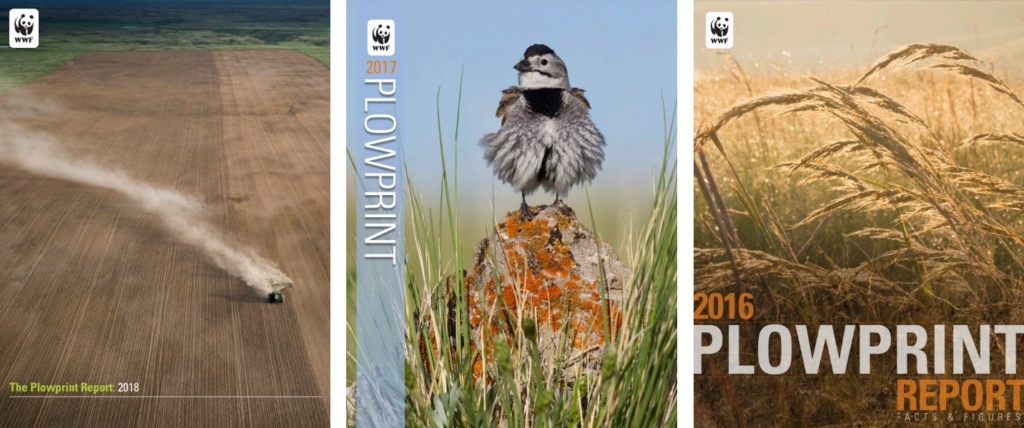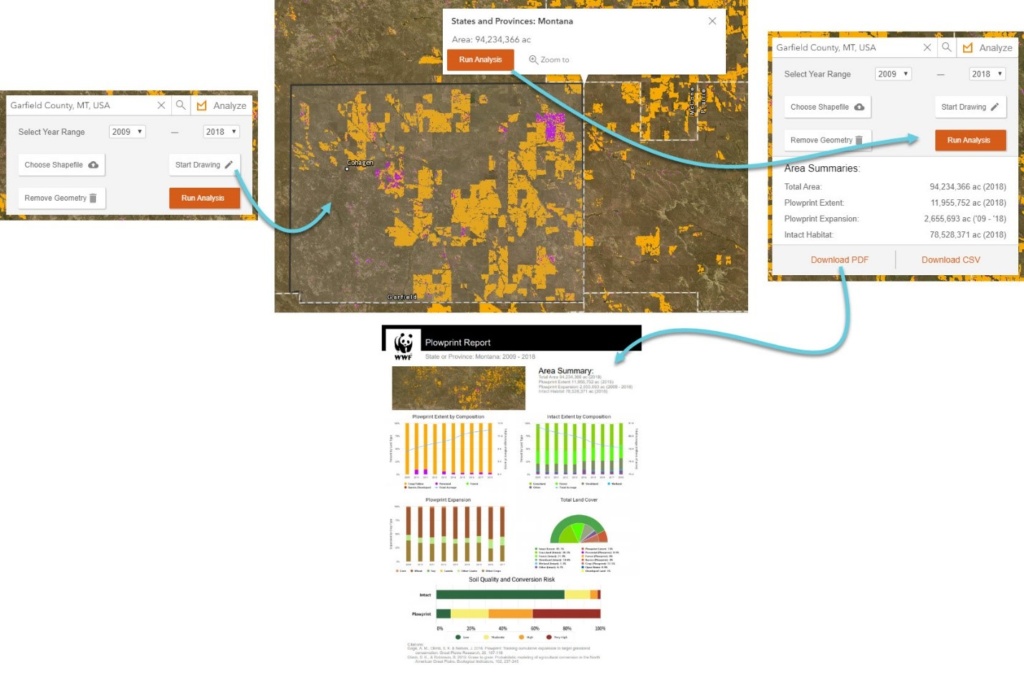Temperate grassland ecosystems, like the Great Plains of North America, are home to a wide variety of plants and animals and provide key ecosystem services, such as soil stabilization, carbon sequestration and water filtration. These lands are under increasing threat of loss due to the expansion of agriculture for food and fuel production and urban development. In the Great Plains, only half of all intact grassland remains, much of it on poor and marginal quality soils. Conversion of grassland to crops in areas of marginal soil is particularly hazardous to ecosystems due to the greater use of fertilizers required to make these lands productive and a higher risk of erosion.
To understand and address these issues faced in the Great Plains, Blue Raster is working with the World Wildlife Fund to bring the annual Plowprint Report online. Since 2016, the Plowprint Report analyzes grassland loss across the Great Plains. Published annually, the report provides a broad overview of trends within large study regions of particular conservation interest, such as the Missouri River Basin (MORB).

“Being able to share the Plowprint Report as an interactive web map is an exciting opportunity to increase awareness about grassland loss across the Great Plains. The Great Plains covers such a large area that it is easy to become disconnected from the landscape beyond where one regularly interacts, and having maps like this with great visual displays at your finger tips allows us to easily see what is happening not just in your community, but across the county, state, region, and beyond.” – Patrick Lendrum, Science Lead at World Wildlife Fund
Plowprint Report Details
The report leverages the USDA’s Cropland Data Layer (CDL), the Canadian Annual Crop Inventory (ACI), the National Land Cover Database (NLCD), US Census TIGER 2019, and Canada Road Network 2018 data to identify areas of “Intact” (grassland) and “Plowprint” (grassland converted to cropland) land by composition and ownership.
These areas are visualized in the new interactive Plowprint web map application. To quantify grassland loss, users can select state or county boundaries, draw, or upload their own areas-of-interest (AOI) for on-the-fly analysis. The tool generates a report with a collection of charts that help the user understand their AOI’s grassland characteristics and trends.

The tool leverages ArcGIS Image Server to quickly analyze the user’s AOI to deliver a report of trends in land use conversion and composition. Users can select data going back to 2009, providing a detailed view of historical patterns. Once the analysis is run for the selected area, users have the option to download the results as a PDF document and CSV file.
With its ability to quantify grassland loss on-the-fly and generate powerful visuals along the way, this application will provide policy makers, companies, and landowners valuable decision making information about habitat conversion within areas under their control. With Great Plains comes great responsibility to monitor these vital ecosystems – Plowprint enables this action.
- Posted in
- ArcGIS Image Extension for Server
- Conservation
- Environment
- JavaScript API
- Land Use
- Nonprofit/NGO
Related Posts
- New Features in the LEARN Tool Expand Functionality for Assessing GHG Emissions from Land Use
- Bringing Transparency to Transboundary Water Policy in the Mekong River Basin
- Blue Raster Pioneering Imagery Management Technology and Delivery Workflows with ArcGIS
- Estimating Community GHG Emissions from Land Use Change
- Track Industrial Spaces in the Mekong Region with the Updated Mekong Infrastructure Tracker
